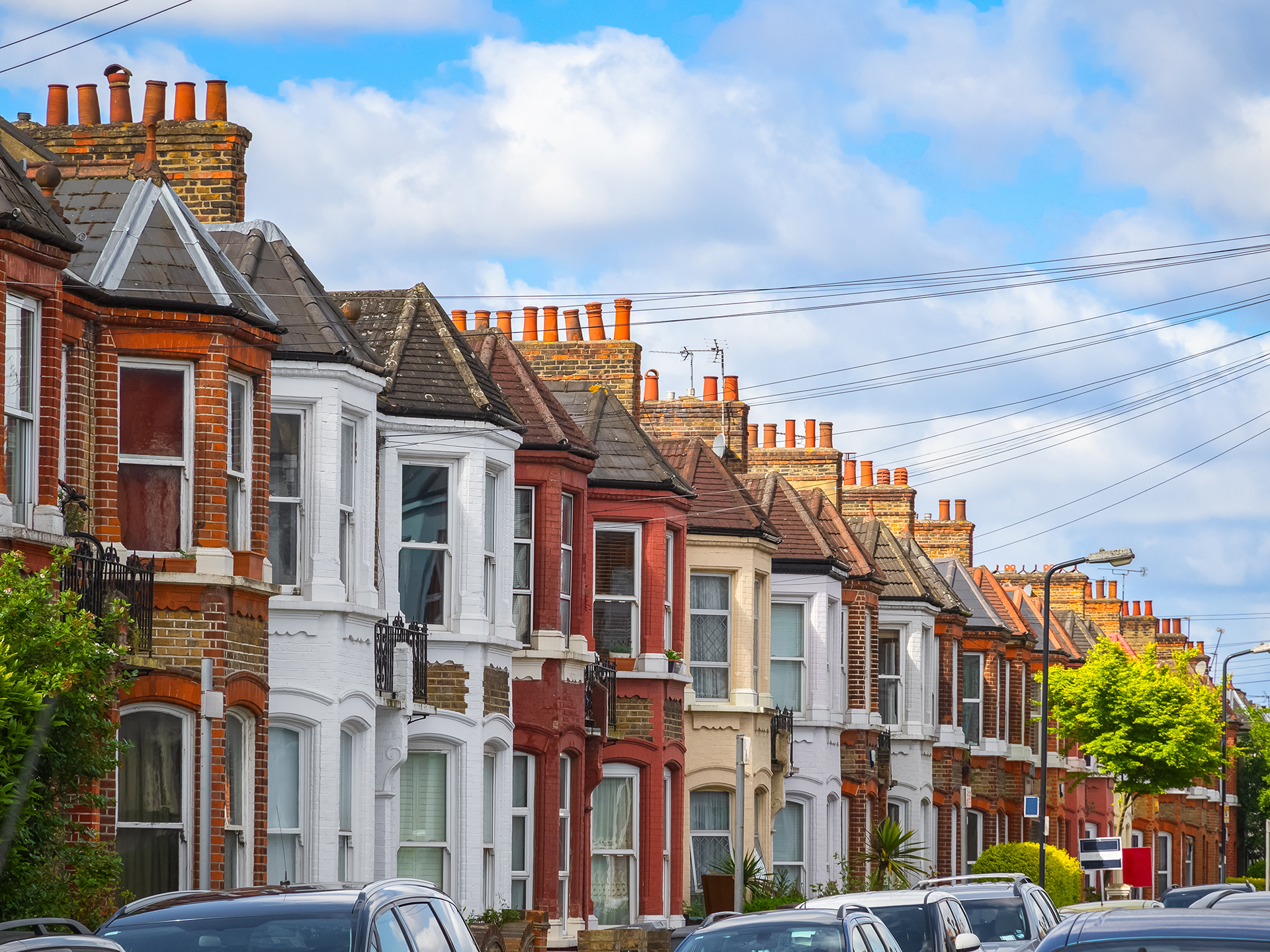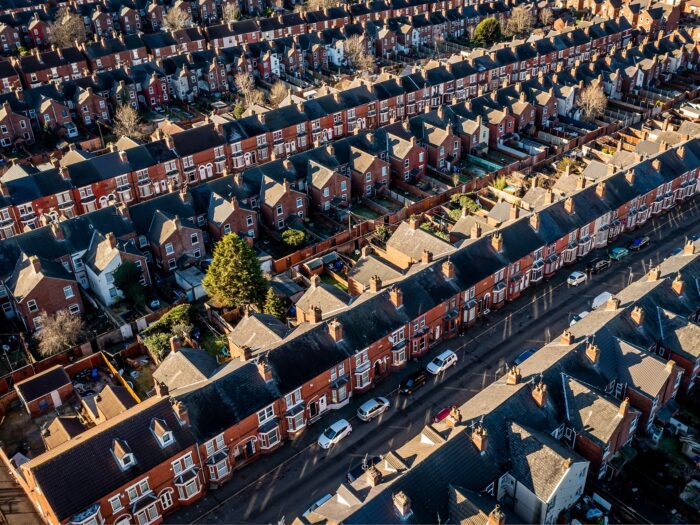
Image credit: I-Wei Huang
Can you insulate a Victorian house?
Wondering how to insulate a Victorian house? You need to understand the practicalities, when it comes to insulating older buildings.
If you’re one of the millions of people living in a Victorian house, here’s what you need to know about the challenges and potential pitfalls of insulating your home; and how to overcome them.
Insulation: Victorian house v modern home
Jon Bonnar, Managing Director at Cotswold Energy, sets out the situation: “Victorian houses are common in the UK, there are about 26 million of them lining our streets.
“With big sash windows, slate roofs, generously sized rooms and brick exteriors, they’re often sought-after for their visual appeal and durability.”
However, there’s a downside. Victorian houses are often colder than modern homes as they lack the heat-retaining structure and techniques used in newer builds.
“High ceilings are typical, which means there’s more space to heat,” Bonnar adds.
“Plus, most Victorian homes were built with solid walls and no internal cavity where you could put insulation. Often, they also lack insulation in the roof and floors.”
This lack of insulation means they lose heat much quicker than modern homes, while fireplaces and floorboards can make them prone to draughts.
This all makes it much harder to keep the house warm.

With rising energy prices, and climate change high on the agenda, it makes sense to think about home improvements that will reduce the amount of fuel you need to heat your home.
Less fuel used means more money saved and less carbon dioxide produced. So what are the best ways to achieve this in older properties?
What is insulation?
Let’s start with the basics. Insulation is anything designed to slow the loss of heat from your house. Heat will always tend to flow from warm areas to cooler.
So when it’s cold, the heat inside your house is always going to travel – by means of conduction, convection and radiation – to unheated rooms (like lofts, basements and garages) and, of course, to the outside.
Better insulation should reduce your heating costs, because you don’t have to pay to heat air that subsequently escapes from your house. Or to heat the cold air that sneaks in to your house to replace it.
Why insulate a Victorian house?
Bonnar says: “Insulation helps to trap heat in your home during the winter, which means you’ll burn less fuel to heat your home.
Considering heating accounts for nearly half of all energy consumption and 40% of energy-related carbon dioxide emissions, this is a huge win for the environment.”
Insulating a Victorian house: potential problems
In the past there have been problems in older buildings with inappropriately installed insulation, made from the wrong materials. This can create problems with mould and even rot.
Older buildings are permeable: moisture created by day-to-day living escapes through the masonry, up the chimney and through gaps around windows and doors.
If you stop this happening, it can cause trouble. A problem called cold-bridging can occur anywhere where there is a gap in insulation, such as where walls and floors meet.
Condensation can form in these cold spots, and subsequently mould.
Introducing the wrong type of manmade insulation, installed badly and, say, combined with more airtight windows, has been known to trap moisture between walls and insulation.
Then the rot can set in. Literally.
That’s why it’s vital to use contractors who know what they are doing and understand how to retrofit insulation to older buildings.
Whole-house approach
Increasingly, experts are realising that a holistic, whole-building approach is preferable to the piecemeal addition of individual energy-efficiency improvements.
It’s important that all the elements work together, and that proper ventilation of the house is considered.
Good practice also dictates a fabric-first approach.
That means making sure the underlying structure is in good repair, and tackling simple energy-efficiency basics like low-energy bulbs before moving on to bigger energy-efficiency measures.
Building regulations

On top of all of these issues, there are Building Regulations you will need to meet if you are changing your property.
For example, if you are putting in new windows or doors, these need to be more thermally efficient than the ones you are replacing. The minimum thermal efficiency (U-value) of the replacements is prescribed in the latest version of building regs, which aim to ensure all property renovations improve the energy efficiency of buildings.
Getting advice
As you can see, insulating a Victorian house is neither simple nor cheap.
But it is a project you may well want to tackle nonetheless, spurred on by the subsequent cost-saving and climate-related benefits.
When talking to professionals, bear in mind that insulation salespeople have a financial incentive to sell their product.
And general builders don’t necessarily have particular training with what are new materials and techniques.
The British Standards Institute has written a set of standards – a code of practice – setting out best practice when it comes to retrofitting energy-efficiency measures into houses.
This is called PAS 2035, and it sets out a quality standard for retrofit and energy-efficiency work on domestic housing, including insulation.
You should look out for an installer who can work to this standard.
Retrofit assessment
A good way to work out what would be best for your house is to start with a comprehensive energy audit or retrofit assessment.
If you can find one locally, one of the new specialists called retrofit assessors would be a good person to assess your house and advise on what to fit to improve your energy efficiency.
You can find trained retrofit assessors listed on the Trust Mark website. Or you could try the website of Elmhurst Energy, a private company that trains assessors.
As yet, there aren’t many of them about. But it is hoped that, going forward, more people will train as both retrofit assessors, and the retrofit coordinators who can project manage retrofit work. The video below shows what’s involved in having an energy audit of your home.
Taking up the challenge
Of course, if you’re up for the challenge of doing it yourself, there are plenty of people out there who have done the work themselves and lots of them are happy to share what they have learned.
If you want to give it a go on your own – and lots of people do – the SuperHomes network is a super source of help and information – and a great place to get in touch with other people who are taking action to make their homes more energy efficient.
In the below video, a homeowner talks about his experience of retrofitting insulation to his Victorian home.
Financial support
Although there have been a lot of government green home schemes over the years, at the moment there is little financial support available in England.
If you are on a low income, you might be able to get support under a scheme called the Energy Company Obligation (ECO+) the Great British Insulation Scheme.
READ MORE:




